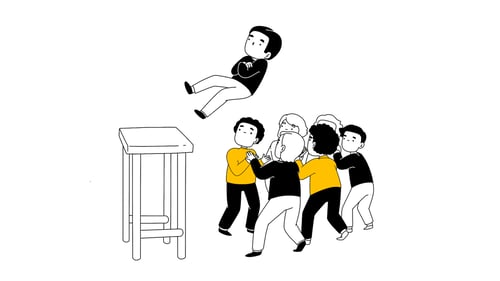Migration from SOAP API to REST API: This is how you do it
Soap is an older protocol that has been used for communication between web services for some time. But as the internet evolved, the need to build ‘lighter’ web and mobile applications arose. And REST API saw the light. This architecture style is very popular these days to link web services because of its simplicity. Have you built web services with SOAP and would you like to migrate to REST API? We are happy to explain how you can approach this.
SOAP API VERSUS REST API
SOAP (Simple Object Access Protocol) and REST (Representational State Transfer) are both alternatives to build APIs and transfer data. SOAP uses WSDL for this: a definition based on XML. IN WSDL you will find several messages. These are action-oriented (POST) messages, such as ‘create a new customer’ or ‘fetch this customer’.
The SOAP standard is very extensive. Here you will find many functionalities, such as ‘exactly once implementation’ reliability of messaging and security. Many of these options are not available in every programming language or, framework and they make SOAP a lot more complex. REST uses OpenAPI Specification (OAS) as the standard, language-independent interface and HTTP protocols for communication between web services. This makes REST a lot easier than SOAP.
Are you struggling with a specific integration issue? Or do you have a question about certain systems, application, or Integration as a Service
MIGRATION FROM SOAP API TO REST API: THE POSSIBILITIES
Besides the fact that REST is more succinct compared to SOAP a migration is also interesting when you offer your own application. If you have created a SOAP API, it requires technical knowledge from the person who wants to link it. You then choose to build REST API for your application, but how do you approach the migration from SOAP to REST?
Set up migration plan
Put together how you want to transfer data from A to B and the requirements for this. It is a big difference when you have a one-to-one link between two parties or
when there are 10 customers for a service. You look at the impact of the migration, what it costs and what it yields
Integration layer as an intermediate step
Suppose you have those 10 customers. Then the choice for an integration component is a no-brainer. You make the SOAP interface and the REST interface, available on your integration layer and ,the 10 customers transfer within their own timelines. In time you will phase out the SOAP interface. The interfaces you have, now will remain and objects will deliver the same as before, but now through an integration layer.
Complete conversion from SOAP to REST
Or you opt for a full migration from SOAP to REST. This is often a complex story, because the structure of REST differs from that of SOAP. For example, the granularity of data is different. SOAP can be seen as an envelope containing data, while REST is made up of resource in collections. This means that the functional structure of your data changes when you switch completely from SOAP to REST. This also has an impact on the code of your customers. Customers are therefore not often thrilled when you fully migrating from SOAP to REST.
WANT TO KNOW MORE ABOUT BUILDING A REST API?
Watch our video on how to develop, test and manage a good REST API with our Frank!Framework. Do you have questions, or would you like to know more about migrating from SOAP to REST? Leave your question here or schedule a moment to chat with one of our API specialists.



/BewerktWAF3.jpg?length=500&name=BewerktWAF3.jpg)
/BewerktWAF11.jpg?length=500&name=BewerktWAF11.jpg)